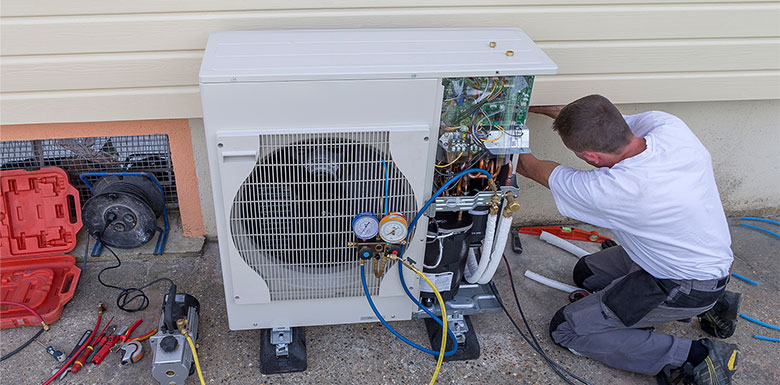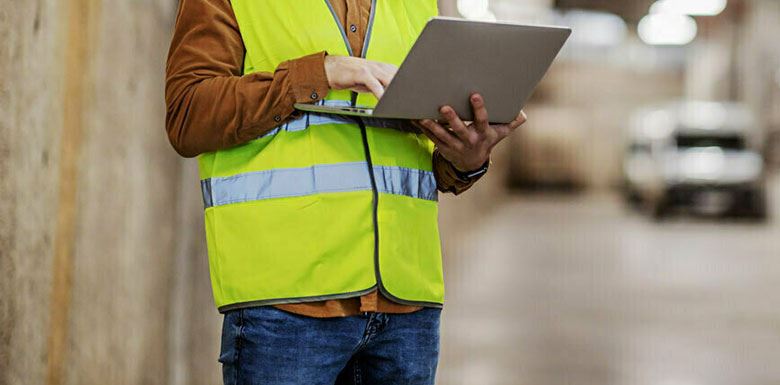Home energy technologies - a trader's guide
 In this article
In this article
The way we heat our homes is changing. Currently, around 16% of the UK's carbon dioxide emissions come from keeping our homes warm, and most of this can be attributed to gas boilers. The UK government’s plans to reach net zero by 2050 are ambitious, and rely on the home energy sector updating supply chains and products as efficiently as possible.
‘Changing how we heat our homes is an essential step in fighting the climate crisis,’ says Chris Lovatt, Chief Operating Officer of UK Solutions at E.ON UK. ‘Delivering a cleaner energy system creates more affordable and secure energy supplies while simultaneously boosting jobs and skills.
‘We need to take climate action now. Reducing emissions associated with home heating by moving away from gas is a large and complex task that will take a concerted national effort to reach the government’s [net zero] target,’ says Chris. ‘At E.ON, we want to drive this change and it’s why we’re committed to building a workforce equipped with the skills needed for the energy transition.’
Become a Trusted Trader
When customers see you displaying our logo, they'll know you're a trader they can trust
Find out more
Gas boiler ban: what are the alternative home energy technologies?
The public demand for renewables and energy-efficient alternatives is increasing, since the government aims to ban the fitting of new gas boilers in new-build homes by 2025, and all sales of gas boilers from 2035.
‘The Government’s aspirations and ambitions to reduce our carbon footprint are admirable,’ says Kevin Wellman, Chief Executive Officer for the Chartered Institute of Plumbing and Heating Engineering (CIPHE), ‘and we are all duty bound to help with that, because firstly, we can help to save the planet, but secondly, it should hopefully reduce our fuel costs, given the right designs.’
Heat pumps, immersion boilers, hydrogen boilers and electric fires are all greener alternatives to gas boilers and other carbon-intensive home-heating systems.
Heat pumps are the front-runner of low-carbon home heating alternatives. Heat pumps themselves do not emit any carbon dioxide. They are available as air-source or ground-source, with many other tangible benefits. They’re also efficient - for every unit of energy put in, you get around three units of heat out.
‘Air-source heat pumps have an efficiency rating of around 300%, while ground-source heat pumps can have efficiency ratings above 400%,’ says a spokesperson from Heatable. ‘Compare this to gas boilers that have an efficiency rating of around 90%, meaning that they can only convert 90% of the energy it uses to heat, while 10% is completely wasted.’
Read more: An introduction to heat pumps
‘Heat pumps have a large role to play but there are a range of possible renewable heating options for consumers and the best application should be evaluated on a case-by-case basis,’ says Frank Gordon from The Association For Renewable Energy and Clean Technology (REA).
‘For example larger, older properties off the gas grid could benefit from biomass boilers, a proven technology that has been around for decades, and there are newer electrified heating options under development.’
Hydrogen boilers would look and behave the same way as gas boilers, burning the fuel. But there are safety concerns, and supplyways would have to be readied for use. Plus, hydrogen production isn't carbon-free. Truly green hydrogen is possible, but it's expensive and needs 100% renewable electricity.
Trials of hydrogen home heating in Whitby and Ellesmere Port have raised concerns. ‘Perhaps the communication of the strategy wasn’t conveyed adequately to the residents,’ says Kevin of CIPHE.
‘I’m not saying hydrogen is the answer, but it’s an alternative that should be considered, and the only way to do that is to have field trials to raise people’s confidence. I’m sure there were similar arguments years ago with regards to natural gas, and people then being sure that coal was the best thing that you could ever have.’
Why has heat pump take up been slow?
The government’s independent advisory body, the Climate Change Committee, has said that up to 15 million homes should be fitted with heat pumps, or hybrid heat pumps, by 2035, in replacement of gas. But, consumer take up has been slow.
The biggest stumbling blocks for consumers signing up to new home energy technology, and heat pumps in particular, are perhaps cost and awareness.
To contribute towards the cost The Boiler Upgrade Scheme provides £5,000 towards an air-source heat pump (ASHP) and £6,000 towards a ground-source heat pump (GSHP) in England and Wales. The Home Energy Scotland Grant and Loan offers homeowners a grant of £7500 in Scotland, £9,000 in rural areas, towards a heat pump, and they can also access up to £100,000 in interest free loans, paid back over a total of eight years.
The Heat Pump Association (HPA) states that the average gas boiler installation costs between £1,500 and £3,000 with a heat pump currently costing between £8,000 to £15,000 for air-source heat pumps and anywhere between £18,000 to £25,000 for ground-source heat pumps. These costs don’t include any government funding contributions.
The HPA also highlights that the most recent BUS stats for June 2023 show that since applications for grants opened for the scheme on 23 May 2022, there has been a total of 19,918 BUS voucher applications received up to the end of June 2023, 96% of which were for grants towards air-source heat pump installations. For those vouchers that have been redeemed, the median cost of a BUS installation of an ASHP was £13,018.
‘While new-build heat pump installations will happen automatically in the future, more work needs to be done to bring down costs and increase consumer support for the retrofit heat pump market,’ says Frank at REA. ‘Our colleagues at REA are calling for new government support for heat decarbonisation in every home as a range of policy changes are essential to deliver this.’
How will net zero targets affect my trade?
The Climate Change Committee has set a large target of 600,000 heat pump installations per year by 2028. In 2022, there were only 60,000 installed, making the UK one of the slowest in Europe to embrace the technology. At the current rate of installation, it would take over 400 years for every one of today’s homes to be fitted - not counting the new homes that would be built in the meantime.
The missing link? A bigger workforce - and a grand opportunity for traders to upskill. There are only 400 trained heat pump installers today in the UK, but estimates suggest the UK will need 38,000 by 2028 to reach anywhere near those set targets.
Until the gas boiler ban comes into effect in 2035, they can be fitted in existing homes. Given newer models are more energy efficient than older ones, and often have smart heating controls, new gas boilers are certainly still an energy-saving solution in the interim.
‘There is a fundamental need for net zero-related re-skilling and re-training across the industry and this should be a government priority,’ says Frank at REA. ‘Steps are already underway to re-train North Sea oil and gas workers in renewables, and this should go further with more funding and training places made available.
‘This is a fast-moving area and we recommend energy traders sign up to an accredited consumer protection scheme, like RECC,’ Frank continues. ‘This will ensure consumers are receiving the best possible experience. It will also keep their training up to date and follow the latest industry developments and changes in legislation and technical requirements.’
Further benefits to upskilling in green energy installation
For consumers, sustainable home energy does not stop at heat pump purchase and installation. Heat pumps produce water at lower temperatures than gas boilers, so they might consider the need for larger radiators, better insulation, double glazing, and even solar panels - all at further cost.
- Find out more: how do solar panels work?
‘Solar PV panels and heat pumps combined are a great partnership, as the electricity provided by the solar PV panels is used to run the heat pump,’ says Charlotte Lee, CEO of HPA says. ‘This is further supported by the battery storage to enable the heat pumps to use the electricity generated by the solar PV panels during periods where the sun is not shining.’
It is important, then, to consider all new home energy technologies working in tandem, not just heating methods.
‘A package of measures will achieve the best results,’ says Frank of REA. ‘Net zero means thinking holistically and traders have a great opportunity to do so, and increase the value of their sales, too. A common understanding and recognition of the importance of green projects to the building trade is essential – delivering on net zero helps futureproof the whole industry, not just for installers, but for related trades, like glaziers.’
Adding to this, Ernie Rea of Vantage Windows and Doors says, “When considering net zero targets and new ways of supplying energy to homes, it is essential to combine various energy technologies, including energy-efficient windows and doors. This approach helps homeowners achieve maximum energy efficiency and reduce carbon emissions, making their homes more sustainable.’




